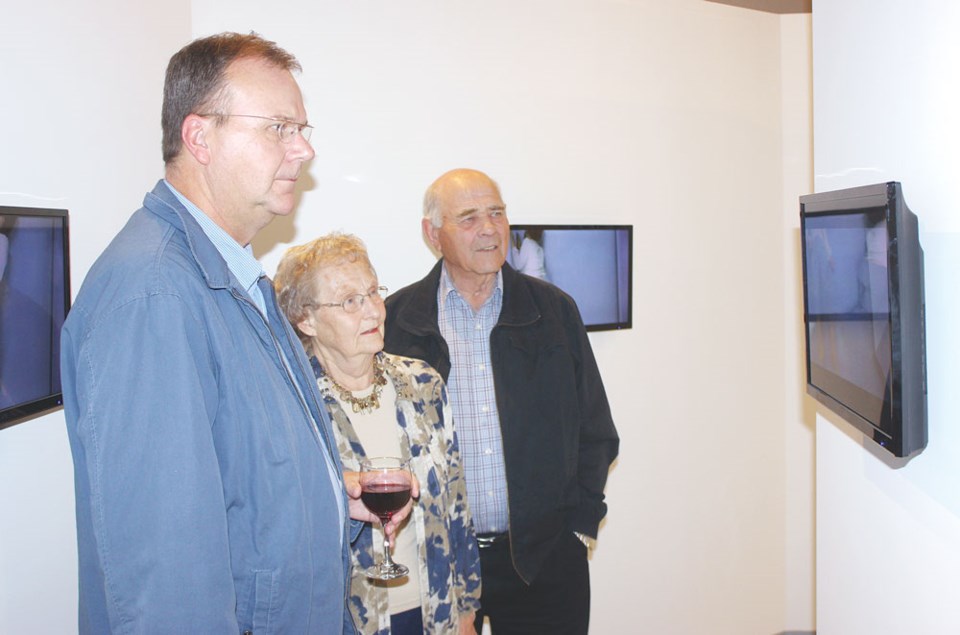The current exhibit inside the Estevan Art Gallery and Museum’s Gallery No. 1 takes a deeper look at the issues of generational trauma, mental health and abuse.
Sarah Anne Johnson’s exhibit, Hospital Hallway, features a series of videos portraying Johnson, wearing a mask, as a patient inside a mental health institution.
A reception for the exhibit was held at the EAGM earlier this month. Johnson wasn’t able to attend, but did send a video message for the assembled crowd. EAGM director Amber Andersen shared some information on the exhibit.
Hospital Hallway is inspired by the experiences of Johnson’s maternal grandmother, Velma Orlikow, who was subjected to experiments using lysergic acid diethylamide (LCD) as a means of mind control.
Johnson noted the tests were conducted without Orlikow’s consent, and were supported by the Canadian government and the Central Intelligence Agency (CIA). They occurred in university hospitals, laboratories and mental health institutions across Canada from 1957 to 1964.
“The CIA hoped that the experiments into using LSD on patients would help them to develop a tool that would act as a ‘truth serum’ on prisoners of war during the Cold War,” said Andersen. “One of the leading institutions in these experiments was the Allen Memorial Institute at McGill University, where Orlikow sought help.”
Orlikow willingly checked into the institute in 1956 for post-partum depression, after unsuccessfully seeking help in Winnipeg.
A temporary octagon-shaped structure was constructed inside Gallery No. 1 for Hospital Hallway, and inside the octagon is a series of walkways similar to a maze.
Fifteen video screens show the various stages of Johnson in the hallway.
“Contorting her body, twitching, gliding and spiraling across the floor, banging on walls, staring into the camera, Johnson dons a mask, a photograph of her grandmother. Johnson is now her grandmother, the patient,” said Andersen.
Audio for the exhibit echoes throughout the gallery, and Johnson hopes the audio will cause people to feel uncomfortable.
The structure is meant to mimic the coldness and sterility of the institution.
The performance is meant to allow the viewer to witness first-hand the out-of-body and mind experience, which can only be watched and known second-hand.
“For Johnson, the performativity of Hospital Hallway allowed her to more deeply connect emotively with her grandmother’s experience,” said Andersen.
When reports of the LCD treatment went public in the 1970s, Johnson said her grandfather was able to make the connection involving Orlikow’s treatment. She eventually sued the hospital and the CIA. Her family is still trying to determine everything that happened to her.
Johnson said there is a strange feeling creating a work about someone she loves who is deceased.
“It’s great to sit my mom down and ask her questions about my grandmother,” said Johnson. “I get to learn more about my grandmother.”
This process has helped her gain a greater understanding about Orlikow, and how she lost something mentally, physically and spiritually while inside the institution.
She is worried, though, that her memories of her grandmother are changing.
Johnson has also created an exhibit, House on Fire, and a dance performance, Dancing with the Doctor, that were inspired by her grandmother’s experiences.
Hospital Hallway will remain at the EAGM until Nov. 3.




